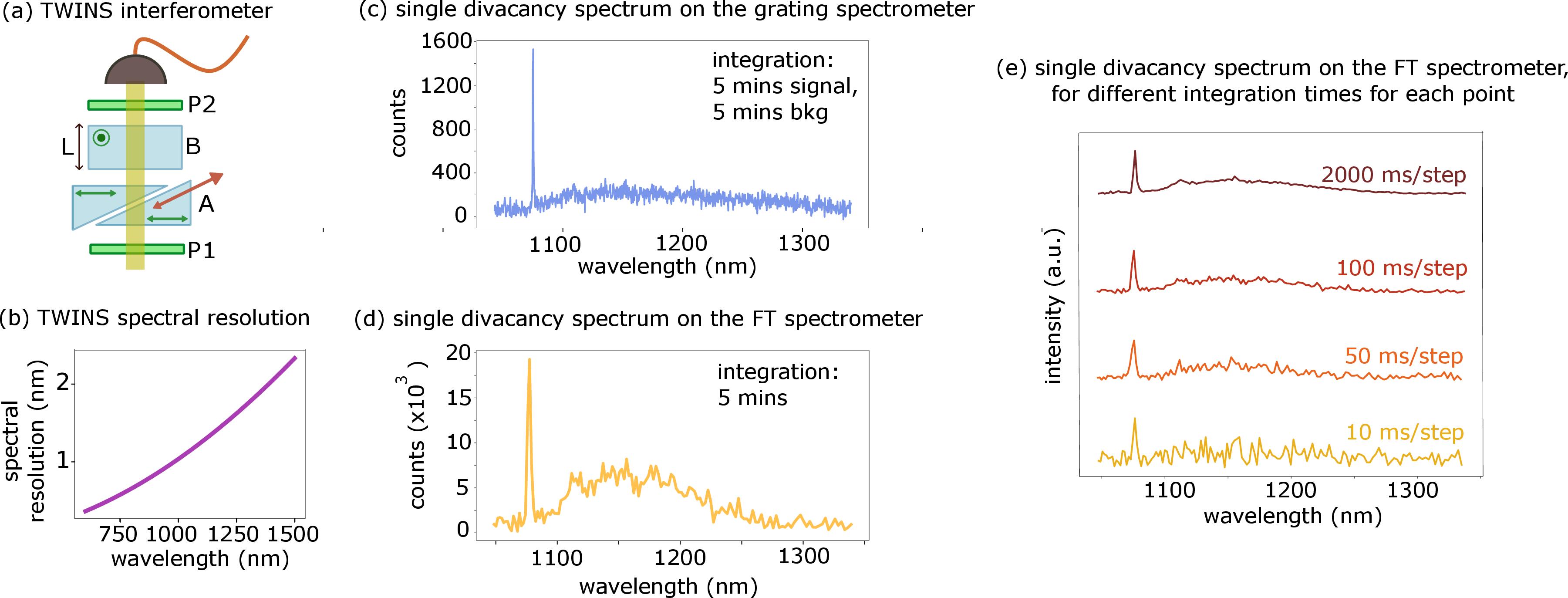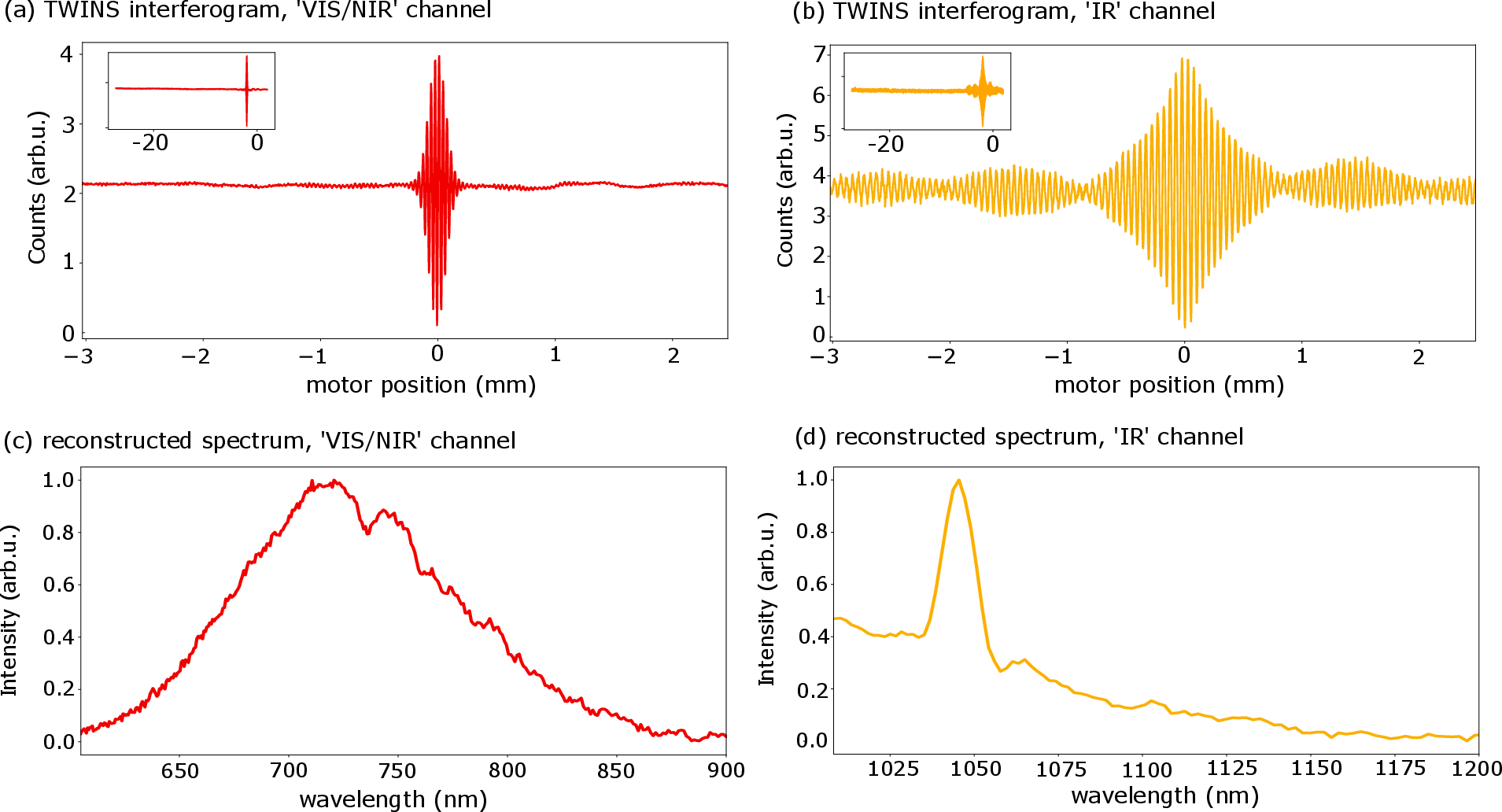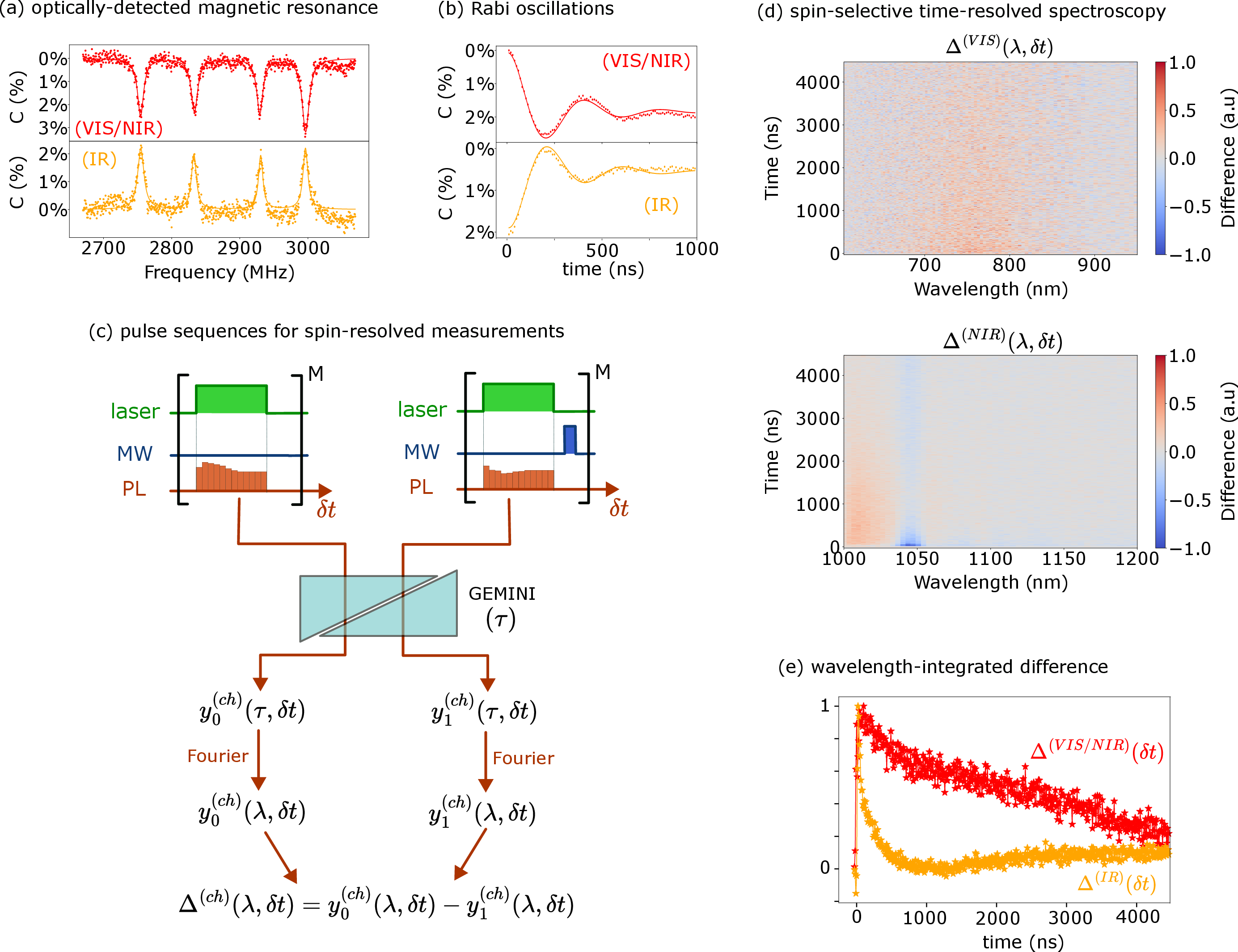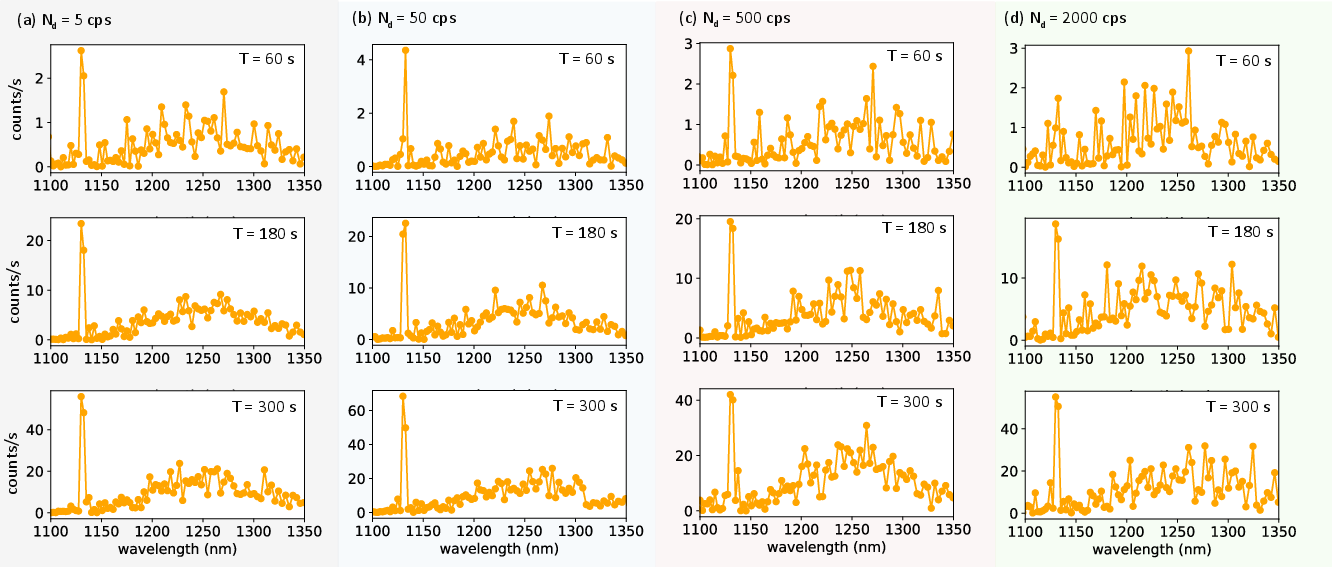- The paper introduces a time-domain FT spectroscopy system using a TWINS interferometer and SNSPDs to achieve sub-nanosecond temporal resolution for quantum emitter photoluminescence.
- Using numerical simulations and experiments, the study shows that FT spectroscopy outperforms grating-based methods in SNR and spectral fidelity under low photon count conditions.
- The work demonstrates broadband detection across multiple spectral channels, enabling spin-selective, time-resolved analysis and advancing quantum control protocols.
Introduction and Motivation
The spectral and temporal characterization of quantum emitter photoluminescence (PL) is central to quantum information science, quantum sensing, and advanced biophotonics. Traditional frequency-domain spectroscopy using grating-based spectrometers and multichannel detectors (e.g., InGaAs cameras) is limited by high dark noise, low quantum efficiency in the infrared (IR) and telecom bands, and the lack of intrinsic temporal resolution. The paper presents a comprehensive paper of time-domain Fourier transform (FT) spectroscopy using a compact, stable birefringent interferometer (TWINS) coupled to superconducting nanowire single-photon detectors (SNSPDs), enabling broadband, time-resolved PL spectroscopy of quantum emitters with sub-nanosecond resolution.
Numerical Comparison: Grating vs. FT Spectroscopy
The authors perform detailed numerical simulations to compare the performance of grating-based and FT spectrometers for single quantum emitters in the near-IR, focusing on the detection of weak signals typical of single defects in wide-bandgap semiconductors. The FT approach leverages the Fellgett (multiplex) and Jacquinot (throughput) advantages, as all wavelengths are detected on a single pixel without the need for slits, and the SNR scales favorably with photon number. In contrast, InGaAs cameras suffer from high dark noise and limited well capacity, severely constraining sensitivity for low-brightness emitters.

Figure 1: Numerical simulations of single-emitter PL comparing a grating and FT spectrometer for a divacancy in 4H SiC, showing superior SNR and spectral fidelity for FT spectroscopy at low photon rates.
The simulations demonstrate that, for a divacancy in SiC emitting 2 kcps with a Debye-Waller factor of 0.04, the FT spectrometer can resolve the zero-phonon line (ZPL) and phonon sideband (PSB) within minutes, while the grating-based spectrometer fails to achieve sufficient SNR under identical conditions. The FT approach remains robust even when the detector dark count rate approaches the signal rate, a regime where grating-based systems are inoperable.
Experimental Realization: FT Spectroscopy of Single Quantum Emitters
The experimental section validates the simulation results using a single (hk) divacancy in 4H-SiC. The FT spectrometer is based on a commercial TWINS interferometer (GEMINI.HP.ASY.L, NIREOS) with α-BBO birefringent wedges, providing high delay stability and reproducibility. The system is coupled to a high-efficiency, low-dark-count SNSPD.

Figure 2: PL spectroscopy of a single divacancy center in 4H-SiC, including the TWINS interferometer schematic and comparison of grating-based and FT-acquired spectra.
The FT spectrometer resolves the ZPL and PSB of the divacancy with high fidelity, requiring no background subtraction due to the negligible dark count rate of the SNSPD. The minimum integration time to resolve the ZPL is on the order of tens of seconds, limited primarily by mechanical motion of the delay line. The spectral resolution is set by the maximum delay, and can be improved by increasing the wedge size or using materials with higher birefringence.
Broadband and Parallel Detection
The FT approach is extended to broadband detection by splitting the interferometer output into multiple spectral channels, each monitored by a dedicated SNSPD optimized for a specific wavelength range. This enables simultaneous acquisition of PL spectra from both the triplet (600–900 nm) and singlet (1000–1300 nm) emission bands of NV centers in diamond.

Figure 3: Demonstration of broadband FT PL spectroscopy of NV centers in diamond, with parallel detection of visible and IR emission bands.
The system achieves high SNR in both channels, despite the three-orders-of-magnitude difference in emission intensity, by appropriate attenuation and detector selection. This configuration is particularly advantageous for quantum emitters with multi-band emission or for applications requiring simultaneous monitoring of different spectral features.
Time-Resolved and Spin-Selective Spectroscopy
A key innovation is the exploitation of the intrinsic temporal resolution of SNSPDs (jitter < 100 ps) for time-resolved FT spectroscopy. The authors perform spin-selective, time-resolved PL measurements on NV centers in diamond, using pulsed optical and microwave control to initialize and manipulate the spin state.

Figure 4: Spin-selective time-resolved FT spectroscopy of NV centers, showing ODMR, Rabi oscillations, and time-resolved PL spectra for different spin states.
By binning photon arrival times during the excitation pulse and Fourier-transforming the interferograms, the authors extract time-resolved spectra for both ms=0 and ms=1 spin states. The difference spectra reveal distinct temporal dynamics in the visible and IR bands, corresponding to the known spin-dependent intersystem crossing and singlet/triplet decay pathways. The temporal resolution is limited by the trade-off between SNR and bin size, with practical experiments using 10 ns bins and integration times of several days to resolve small spin-dependent contrasts.
Robustness and Practical Considerations
The FT spectrometer exhibits strong robustness to detector dark counts, as shown in additional simulations. Even when the dark count rate matches the signal rate, meaningful spectra can be retrieved, a regime inaccessible to grating-based systems. The main limitation is the sequential nature of delay scanning, which can be mitigated by compressed sensing or adaptive sampling protocols when the emitter type is partially known.

Figure 5: Numerical simulations showing the robustness of FT spectroscopy to increasing detector dark counts.
Implications and Future Directions
The demonstrated FT spectroscopy platform provides a cost-effective, high-throughput, and temporally resolved alternative to grating-based spectrometers for quantum emitters, especially in the IR and telecom bands. The approach is immediately applicable to the identification and characterization of single defects in SiC, diamond, and silicon, as well as rare-earth ions and molecular spin qubits. The ability to perform spin- and time-resolved spectroscopy with sub-nanosecond resolution opens new avenues for studying fast dynamics, optimizing spin-photon interfaces, and developing advanced quantum control protocols.
Future developments may include integration with SNSPD arrays for parallel delay scanning, implementation of compressed sensing for rapid emitter identification, and extension to multi-color and multi-degree-of-freedom spectroscopy (e.g., charge-state or environment-dependent dynamics). The technique is also relevant for biophotonics, organic optoelectronics, and the paper of fast-switching or solvatochromic molecules.
Conclusion
This work establishes time-domain FT spectroscopy with SNSPDs as a powerful tool for broadband, time-resolved PL characterization of quantum emitters, with clear advantages over conventional grating-based approaches in the IR and telecom regimes. The demonstrated system achieves high spectral fidelity, robustness to noise, and sub-nanosecond temporal resolution, enabling new experimental capabilities in quantum optics, materials science, and beyond.




